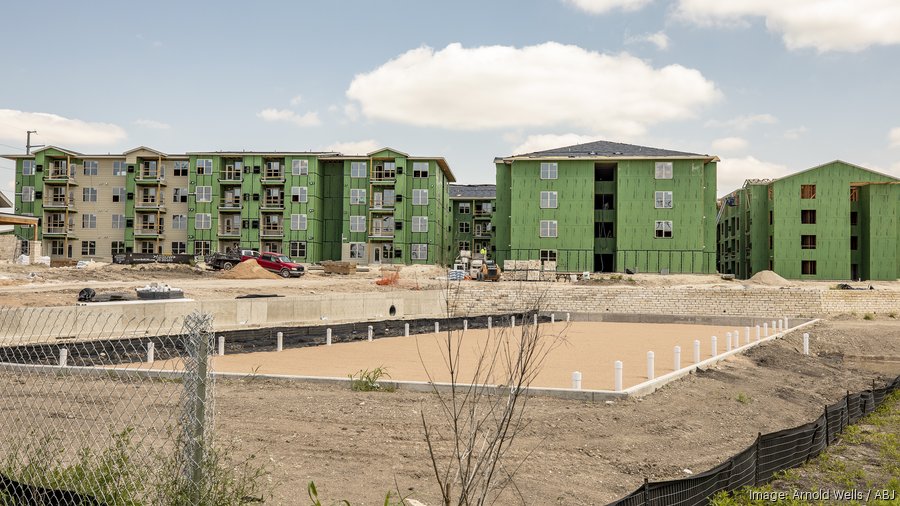
Austin Business Journal shares, "Apartment rents typically drop when new units are added to a market's housing supply, but a new analysis quantifies by how much.
The study by the Pew Charitable Trusts on rent changes in major U.S. cities from 2017 to 2024 determined that for every 10% increase in a ZIP code’s housing supply, rent growth was 1.4% less compared to a ZIP code that had no additional housing supply. The Pew analysis also found that a 10% increase in a market's housing supply correlated to rents growing 5% less from 2017 to 2024.
In Austin, which has undergone an apartment building boom in recent years, the biggest rent declines were for older and lower-quality units, the study found.
Alex Horowitz, project director of housing policy for the Pew Charitable Trusts, said the analysis confirms that one of the best ways to mitigate rent growth is adding supply to the housing market.
“We can see rent growths slow as soon as the new housing comes online,” Horowitz said. “The rent effects are immediate because, essentially, landlords start competing with each other for tenants as soon as new housing gets built. If a landlord in an older building without amenities tries to raise rents, their tenants have new options for places they can go.”
From 2023 to 2024 the average rent in Austin for class A apartment buildings declined 2.6%, according to the analysis, while rent for class B buildings declined 5.9% and rent for class C buildings went down by 11.4%. Overall, rent in Austin went down by 7%.
The Pew Charitable Trusts describes class A buildings as newly built or renovated and in prime locations. Class B buildings are well maintained and in desirable areas, according to the organization, and class C buildings are older, less maintained, have some outdated features and are in less desirable areas.
Horowitz said adding market-rate housing can result in bigger drops in rent for class C apartments because people will look for better living accommodations if they can afford to do so. That means class C landlords need to offer more concessions to get their units rented.
“Housing works like an escalator,” Horowitz said. “So when there's enough of it being built for everyone, the escalator is moving up, and people trade up to something that works better for them. … But when housing markets don't work — so there's not enough (housing) getting built — then the escalator is moving down and people pile up at the bottom.”
From the end of 2017 to end of 2024, Austin added 62,000 apartment units, according to CoStar data, increasing the city's apartment stock by nearly 38%.
Affordability and housing costs have long been one of the biggest concerns in the Austin metro. Still, proposed new housing developments often face pushback when they go before the Austin City Council, based on concerns over things such as gentrification.
One such case that has generated controversy is the Acacia Cliffs apartments, a 10-acre property in Northwest Austin that was recently approved for participation in the city’s Density Bonus 90 program. The landowner, Price Realty Corp., wants to tear down the existing 290-unit complex and redevelop the site with 700 units, 78 to 84 of which would set aside as affordable housing.
Future of rent in Austin
Rental rates in Austin have continued to fall since 2024 and now average $1,405 a month, according to ApartmentData.com. The city’s overall occupancy rate registered 85% in August, an elevated rate that has resulted from the recent building activity.
“It’s no secret that we’re one of the most oversupplied markets in the country,” Patton Jones, multifamily capital markets vice chairman at Newmark, said recently. “We’re not alone. All the popular Sun Belt cities have the same dynamic, and due to oversupply we’ve had negative rent growth and that has brought values down.”
Experts have said new apartment starts have slowed recently due to elevated interest rates and high vacancies. Those factors should allow for existing units to be absorbed into the market but could set up conditions for Austin to see rents to rise again in 2026.
Horowitz said he won't be surprised to see rents in Austin begin to rise if the construction pipeline of new apartments continues to slow. Still, he noted that local governments can take steps to reduce builders' costs even in unfavorable market conditions to encourage continued construction — such as as reducing permitting times, eliminating parking minimums and opening more land for housing.
“Once jurisdictions see rents fall, it's necessary to reduce builders' costs further so that it's still viable to build,” he said.
Both Austin and the state of Texas have taken steps to encourage more housing development in recent years. Among them, Austin has eliminated parking minimums, is working to reduce permitting times and has taken steps to approve unique zoning to allow for more housing. Texas recently passed laws that should open up more land in cities for housing, reduced minimum lot sizes and made it harder for housing projects to be killed."
Source: Austin Business Journal
Written by: Sean Hemmersmeier
Published: August 22, 2025
Posted by Grossman & Jones Group on
Leave A Comment